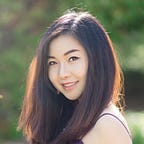Why it’s important to have a diverse bookshelf
The following post is a repost of my guest post on the amazing book blog, Odd and Bookish.
“Do the books on your shelf reflect the world you claim you want?” — Kwame Alexander
In early June 2020, I had the pleasure of hearing Kwame Alexander, a prolific NYT Bestselling writer, speak and deliver a magnificent poem during Act To Change’s first Solidarity Convo. As a Managing Director at Act To Change, a nonprofit focused on ending bullying amongst youth and especially in the AAPI community, the importance of increasing diversity, representation, and solidarity amongst communities is often at the forefront of my mind. After all, it’s something that Act To Change works towards every day — addressing bullying in underserved and diverse communities.
However, while the activist in me watched the conversation with a smile, my writer and reader’s voice was screaming at me internally, holding me to account with thoughts of “You’re not doing good enough.” Internal Tiger Mom jokes aside, I’ve always prided myself in being an avid reader of anything and everything under the sun, and I’ve always craved to have characters that reflected my 2nd generation immigrant Chinese American background and identity in the books that I read. Needless to say, I never got that when I was growing up. In my head, sure, it wasn’t ideal that the Baudelaire orphans, Hermoine, Bella, or Katniess weren’t Black, Indeginous, or a person of color (also known as BIPOC), but it was fine.
Just fine.
And that’s where the problem lies. In 2019, approximately 9% of main characters in U.S. books were of Asian descent, 12% were Black, and only 3% of total books included a LGBTQIAP+ character. Less than half of protagonists were white and about a third were protagonists with animals/other as the main character. When there are more white characters and talking animals as protagonists than BIPOC folks, “just fine” just isn’t good enough. Books allowed me, especially in my teenage years, to dive deep into the glory and struggles of the 1920s, capture the bougie dramatics of New York’s Upper West Side, and immerse myself in the struggles of a magical school for witchcraft and wizardry. It exposed me to a culture that was different than my own — one that was predominantly White. So why can’t I do it the other way around?
By writing Not THAT Rich, I wanted to present a set of fun (and dramatic!) experiences that also exposed young adult readers to a cast of characters that reflected my world growing up — one that reflected the ethnic suburban enclaves that were part of my world. My hope for the book is that it emphasizes the diversity of Asian American culture, but also offers up the common challenges that teenagers all experience today — educational and familial pressures, identity struggles, and peer pressure.
I fully acknowledge that as a new author, I still have a lot to learn about the publishing world, and that will take time. However, as a lifelong reader, I can also do better now, today. In my wild pursuit of seeking out books with characters that remind me of me, I’ve neglected to paint the other side of the world that I would like to see more of — books by other BIPOC authors that are not Asian American. I’ve neglected reading more BIPOC voices by so desperately pursuing my own. I’ve made steps towards creating the bookshelf to reflect not just the world that I want, but the world that already exists (highly recommend Between the World and Me by Ta-Nehisi Coates by the way!) and I hope by reading this post, you’ll consider joining me in looking towards your bookshelf as well.
